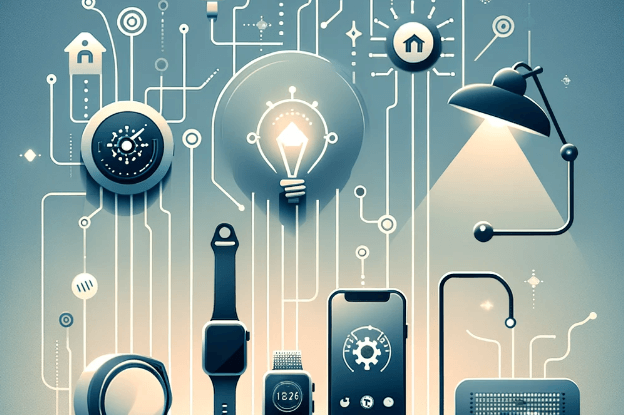Power Management Strategies for Battery-Powered Embedded Systems

In the quickly changing world of technology today, battery-operated embedded devices are a commonplace sight. Efficient power management is crucial for ensuring optimal performance and lifetime of many systems, ranging from industrial IoT devices to portable consumer electronics. The demand for sophisticated power management strategies has increased with the advancement of embedded IT solutions, especially in nations with high rates of technological adoption in the United States.
Comprehending Embedded System Power Consumption
Every embedded system that runs on batteries is composed of intricate hardware and software algorithms interacting with one another. A few of the variables that affect these systems’ power consumption are the peripheral devices, system architecture, and microcontroller selection. Given that power dissipation and electromagnetic interference can be greatly impacted by layout and component selection, hardware PCB design is an essential factor in determining the power efficiency of the system.
This means that fluctuations of power and performance are two of the preeminent problems that designers of an embedded system solve. Feature-rich peripherals and high-performance processors demand more power, and this results in a battery quickly running out of power. Therefore, while creating battery-powered products, engineers must carefully weigh the trade-offs between functionality and energy economy.
Methods of Dynamic Power Management
Embedded systems use various dynamic power management strategies to handle power consumption issues. These tactics adjust the system’s behavior according to the workload and surroundings to minimize energy usage.
The processor can be turned down to save power when there is little activity going on, without compromising responsiveness for essential operations.
Power gating is an additional efficacious tactic that entails the selective deactivation of system components that are not in use. When not in use, non-essential components can be fully unplugged from the power source thanks to power switches built into the hardware design. This method works especially well for systems that have a lot of peripherals or subsystems that are occasionally needed.
In battery-powered embedded systems, sleep modes and wake-up events are also essential components of power management. Through the implementation of multiple sleep stages, from light sleep to deep hibernation, the system can significantly lower power consumption while it is not in use. The wake-up sources and their corresponding latencies need to be carefully taken into account to guarantee that the system can react quickly to external events as needed.
Read also Why Use Professional Link Building Services?
Power Optimization Driven by Software
Although software plays a crucial role in managing power usage, hardware design establishes the groundwork for power efficiency. For embedded software developers to fully utilize the capabilities of the hardware, they must implement power-aware programming techniques.
Task scheduling is an essential part of software-driven power optimization.The system can reduce the number of transitions between the active and sleep stages by grouping relevant jobs through the implementation of intelligent scheduling algorithms. By using this method, the energy overhead of frequent mode switches is minimized and the system can operate in low-power modes for extended periods.
The software can also take advantage of the hardware platform’s power management characteristics. This entails setting up proper clock gating, turning on peripheral power-down modes, and transferring data efficiently using direct memory access (DMA). The main CPU can go into sleep modes more frequently by assigning data transfer tasks to specialized hardware, which further lowers overall power consumption.
Harvesting Energy and Managing Power Sources
Energy-collecting solutions have drawn a lot of attention as embedded systems grow more independent and are used in remote areas. By utilizing these methods, devices can draw energy from the environment—such as solar, thermal, or kinetic sources—to complement or even replace battery power.
The power management architecture of embedded battery-powered devices must be carefully considered when integrating energy harvesting capabilities. The primary battery source must be managed by the system in addition to effectively storing and using the energy that has been harvested. This frequently entails putting in place complex power source switching and charging algorithms to guarantee continuous functioning and extend the system’s lifetime.
Furthermore, for battery-powered systems to have efficient power management, a precise battery state-of-charge (SoC) estimate is essential. The system can make intelligent decisions about power allocation and give the user accurate feedback regarding remaining battery life by using sophisticated algorithms that consider variables like temperature, discharge rate, and battery age.
A Look at Thermal Management
Thermal control and power management are closely related in embedded systems since high heat generation can shorten battery life and affect performance. Maintaining ideal operating temperatures and heat dissipation depends heavily on effective hardware PCB design.
The thermal performance of the system can be greatly enhanced by carefully positioning the heat-generating components, making use of thermal vias, and integrating heat sinks or spreaders. Furthermore, software that incorporates thermal throttling and temperature monitoring features can avert overheating and increase the longevity of battery-operated devices.
Power Management and Security
The influence of security measures on energy consumption is a critical consideration for power management techniques, as embedded systems grow more interconnected and susceptible to security attacks. Secure communication protocols and cryptographic processes can result in a large processing overhead that may contradict power-saving objectives.
Modern microcontrollers frequently include hardware-accelerated security mechanisms to help with this problem. Processing time and energy consumption can be decreased by using these specialized hardware blocks, which can carry out complex cryptographic operations more quickly than software implementations. Through the utilization of hardware security capabilities and power-aware software design, embedded system in usa may uphold a robust security posture while preserving battery life.
Prospects for Embedded Systems Power Management in the Future
Moreover, machine learning and artificial intelligence approaches are making their way into embedded power management plans. AI-driven power management algorithms can more precisely forecast future energy requirements and make more educated judgments regarding resource allocation by examining usage trends and environmental data.
Moreover, the development of novel battery technologies and energy storage options is anticipated to completely transform the potential of embedded systems that run on batteries. When compared to conventional lithium-ion cells, solid-state batteries, for example, offer better energy densities and enhanced safety, possibly greatly increasing the running time of portable electronics.
Conclusion:
An essential component of developing and putting into practice embedded systems that run on batteries is power management. There will always be a need for more advanced power management techniques as these gadgets become more common and feature-rich. Through the combination of cutting-edge hardware PCB design methods and sophisticated software algorithms, engineers can develop embedded it solution that achieve optimal harmony between functionality, performance, and energy efficiency.





